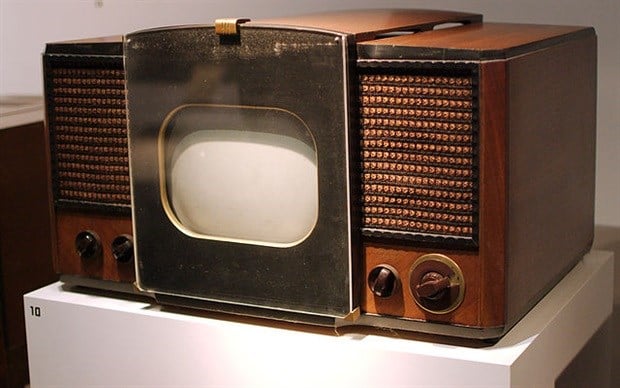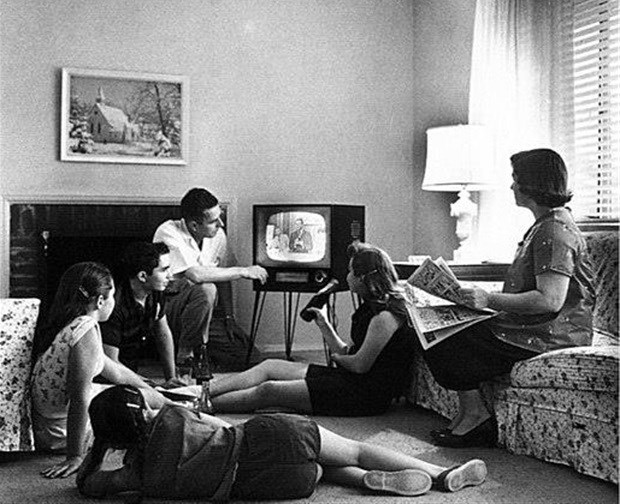






That’s unlikely to change, even as streaming services like Netflix and Showmax replace traditional broadcast models. Families still gather around the box daily for the easily digestible mix of entertainment and information that TV provides. South Africans just love their TV!
So, it’s worth looking at how global history and innovation trends have shaped the home entertainment experience into the premium form it is today.
It was only in the aftermath of World War II that TVs gained mainstream popularity, helped by the post-war economic boom. Then, commercial TV production was largely centred in Europe and the US, with brand names like Telefunken standing out.
This period was less remarkable for TV’s technological advances, and more memorable for the moments brought into people’s homes globally – like the Coronation of Queen Elizabeth II and the 1969 Moon Landing.
Chunky, box-format TVs with CRT (cathode ray tube) display technology were the norm into the 1980s and ‘90s when things started to change dramatically. The advent of VCRs altered the way that people watched TV, and display technology leaped forward. Japanese electronics companies drove this evolution. CRT screens gave way to plasma, LCD (Liquid-crystal display), and LCD step-up LED (Light-emitting diode) in quick succession. TVs featuring this kind of flat-screen technology finally overtook CRT TV sales in 2007. It was the dawn of a new era.
With their lightweight components, LCD (and, now, LED) screens allowed for thinner TVs with ever-bigger widescreen displays. TV aesthetics became a greater consideration – including how the set fitted into peoples’ lifestyles overall. Paired with electronics like surround sound systems and DVD players, premium home-viewing experiences became possible. Newer advances, like the debut of UHD (Ultra-high definition) and 4K digital TV formats, and higher-contrast immersive OLED displays, have only enhanced the viewing experience.
At the same time, the internet was gaining speed. TV manufacturers embraced this world-changing trend. Ensuring their continued relevance in people’s always-connected daily lives, TV makers developed smart TVs that can access online content via cable or Wi-Fi.

As with manufacturing and technological innovation in general, Asia is a dominating force in the production of TVs. Depending on the source of statistics, 9 out of 10, or the full top 10, of the world’s best-selling TV brands come from Asian companies today. While Korean heavyweights, like Samsung and LG, have dominated market share since the 1980s, there is a global shift toward Chinese brands which are expected to become the next market leaders.
Having extended their popularity beyond China’s borders – the biggest TV market in the world – brands such as Skyworth, Hisense and TCL are achieving global dominance by providing innovative, quality products that satisfy digital-savvy consumer needs.
China’s stamp on TV manufacturing is a value-orientated mindset combining high-end features, greater consumer choice and more accessible price points.
The next step for TV? Expect smart systems to get even smarter with AI (artificial intelligence) TVs entering the mainstream from 2019. Built-in assistants will be able to better identify personalised content, while visuals will look even better thanks to automatic optimisation of resolutions.
Another predicted shift is a far greater fusion of entertainment and communication. Interactive shows, which Netflix is beginning to showcase, will become commonplace, with viewers controlling the story and episode outcomes. Along with more participation, expect greater content choice than ever before, with big media conglomerates sharing your screen with app-delivered content and individual streamers.
By carefully watching digital trends, and aligning product features with the latest innovations, TV manufacturers are taking viewers into the future of home viewing in well-equipped, fully-enabled style.